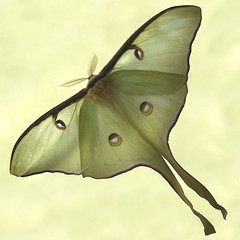From a biological perspective none of this proves anything.
It’s no where close to really nailing down Tolle’s statements about the pain-body.
But, it puts us in the ball park.
One - Memory need not be confined simply to the brain. The body can remember.
Two - The impact of events (call it memory for short) can be inherited.
I find all of this exciting, even radical.
Radical? You say.
Yes!
And germane to those interested in understanding the mechanics of spiritual cultivation and enlightenment.
Realizing who you are is a piece of cake compared to living it.
It is a freebie.
You don’t have to do a thing for it, you don’t have to change, and you don’t have to alter anything…
Just relax and do nothing, go nowhere, and be nobody just for a split second – and grace shows you who you are …
When you want to live this awakening, you realize it will cost you.
The cost is your fixated point of view…
The cost is your resentment, blame, and judgment.
Adyashanti
The cost is the dissolution of your pain-body.
And that is something that you have to work at.
This is how we let go of all fixated views and ego.
So best we understand what the pain-body is, how it is created,
and what dissolving feels like.
Let me say this in another way:
For the past one hundred years biologists have held the view that as a caterpillar changes into a butterfly or moth, it essentially dissolves into a soup.
In its new incarnation the butterfly not only has an entirely different body, but also a whole new lifestyle, diet, and ecological niche.
Recently however, scientists have shown that a moth can remember what it learned as a caterpillar.
To be specific: Shock a caterpillar when it smells a certain chemical and later the moth will avoid that odor.
The moth can recall its conditioning- what it learned essentially in its “previous life” as “worm.”
Perhaps this learning/memory is stored in small pieces of neurocircuitry that remain intact in the soup. There are hints of this, but even so, it is a radical concept that old memory circuits survive the dissolution and are then re-integrated in the new nervous system.
This is so radical an idea that I am tempted to wonder that perhaps even caterpillars have a “soul” - something that records life lessons, not unlike the brain-dead subjects mentioned in Allan Hamilton’s book, The Scalpel and the Soul.
So, do butterflies have pain-bodies?
Do butterflies have flashbacks?
My god, the humiliation of remembering that once you were a worm!
Spiritual evolution can be ruthless in its search for truth.
Are butterflies not even spared?
I can empathize, as I recall the time in the fourth grade when I was forbidden to take recess with the other children.
My penmanship was so terrible that my teacher insisted I stay at my desk carefully writing out over and over again:
The worm one of the lowest forms of animals crawls on its belly.
“May I go to recess now?”
“No!”
Obviously, it was a lesson on “w,” “l” and “m”
I, however, took it as an opportunity to create one more bit of personal pain-body.
Which may, or may not, inspire a reinterpretation of this classic lesson:
The great Taoist master Chuang Tzu once dreamt that he was a butterfly fluttering here and there.
In the dream he had no awareness of his individuality as a person.
He was only a butterfly.
Suddenly, he awoke and found himself laying there, a person once again.
But then he thought to himself, "Was I before a man who dreamt about being a butterfly, or am I now a butterfly who dreams about being a man?"
(Any explanations will be welcomed.)
Subscribe to:
Post Comments (Atom)


No comments:
Post a Comment